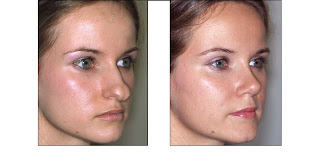Eyebrow Hair Transplant
The eyebrows occupies a very obvious position on a person's face and are critical to the appearance of the eye area. They constitute the eyes and play an important aesthetic role between the eyes and the hairline of the forehead. A significant loss or change in eyebrow density is usually very noticeable and can be disturbing. Although eyebrow hair transplant has changed over the years, sparse or sparse eyebrows are usually not aesthetically ideal.
Both men and women can have eyebrow hair transplant. Although the most common practice is to target eyebrows lost due to injury (scratches, avulsions, burns), disease (alopecia areata, telangiectasia) or age (sparse hair), it can also be used for cosmetic purposes (to make eyebrows and/or Thickening of hair) extension of the tail). Sparse eyebrows in women are due to congenital sparseness and limited ability to grow or fall off eyebrows due to excessive plucking.
Tattooing missing or thin eyebrows is a very common technique that can be done simply and quickly with immediate results. Unfortunately, eyebrow tattoos usually look very unnatural and the color matching is not ideal. Over time, tattoos often fade and become blue-black, which is even worse color scheme. Eyebrow tattoos are not easy to remove, and I usually advise against it. It is best to transplant the hair directly onto the tattooed skin.
Transplanting hair to the eyebrows is a more refined technique used in scalp hair transplantation. It is based on two important principles; a single follicle graft, which is precisely placed into the unique shape and orientation of the eyebrows. Although the area of the eyebrows is not large (compared to the scalp), the collection and placement of individual follicles in the eyebrows is very delicate, and it can almost take the time of scalp hair transplantation.
The position and proper angle of the hair are good, the key to natural-looking eyebrow transplants. The eyebrows have unique directions in different parts of the eyebrows. The hair on the upper middle of the eyebrow points upwards toward the hairline, while the hair on the tail usually points toward the ears. The direction of the eyebrows is also very similar to feathers. The upper part of the eyebrows points slightly downward and the lower part slightly upwards, forming a small bulge.
Eyebrow transplants may require more than one transplant to get the best results. Not all follicles will survive every transplant, and the optimal density of eyebrows may require a second set of transplants. My goal is to get the best results in one course of treatment rather than two courses, but the growth and density of the hair transplant is not completely predictable. Do not perform a second transplantation within one year after the first transplantation in order to provide the best time for hair growth and the patient to adapt to changes in the appearance of eyebrows.
The hair used for eyebrow transplantation comes from the scalp. Because most scalp hairs are thicker than thin eyebrows, the donor site is usually taken from the scalp hair behind the ears. The scalp hair in this area is thinner and more suitable for eyebrows. Each eyebrow usually needs about 50 to 75 hairs to be transplanted. Depending on the patient's goal, sometimes each eyebrow can be transplanted up to 100 or more. These hair transplants, like the rest of the scalp, will continue to grow for the rest of your life and require regular trimming. Over time, the transplanted scalp hair will have certain characteristics of eyebrows, and growth will slow down. (The growth of eyebrows is about half of scalp hair)
Please note that although the eyebrow graft will be seen immediately after the operation, the hair shaft attached to the hair follicle will fall off. Essentially, follicle transplantation has been performed, and the hair shaft is a good way to place them. The hair shaft will fall off quickly, making the eyebrows look like they were before the operation. It takes at least 3 months for hair growth in hair follicles to reappear, and it takes 6 to 9 months to grow and see the final result.
Apart from making the eyebrows knotted and occasionally a slight swelling or bruising of the upper eyelid, there is no other obvious recovery effect. Except for the ointment, no other dressings were used on the eyebrows to keep them moist for the first few days. People can usually return to work within a few days.
It can be seen that eyebrow transplantation requires more investment and patience than eyebrow tattoo methods. However, if you are looking for the most natural eyebrow effect, especially among young people, eyebrow transplantation may be a good long-term solution.





Comments
Post a Comment